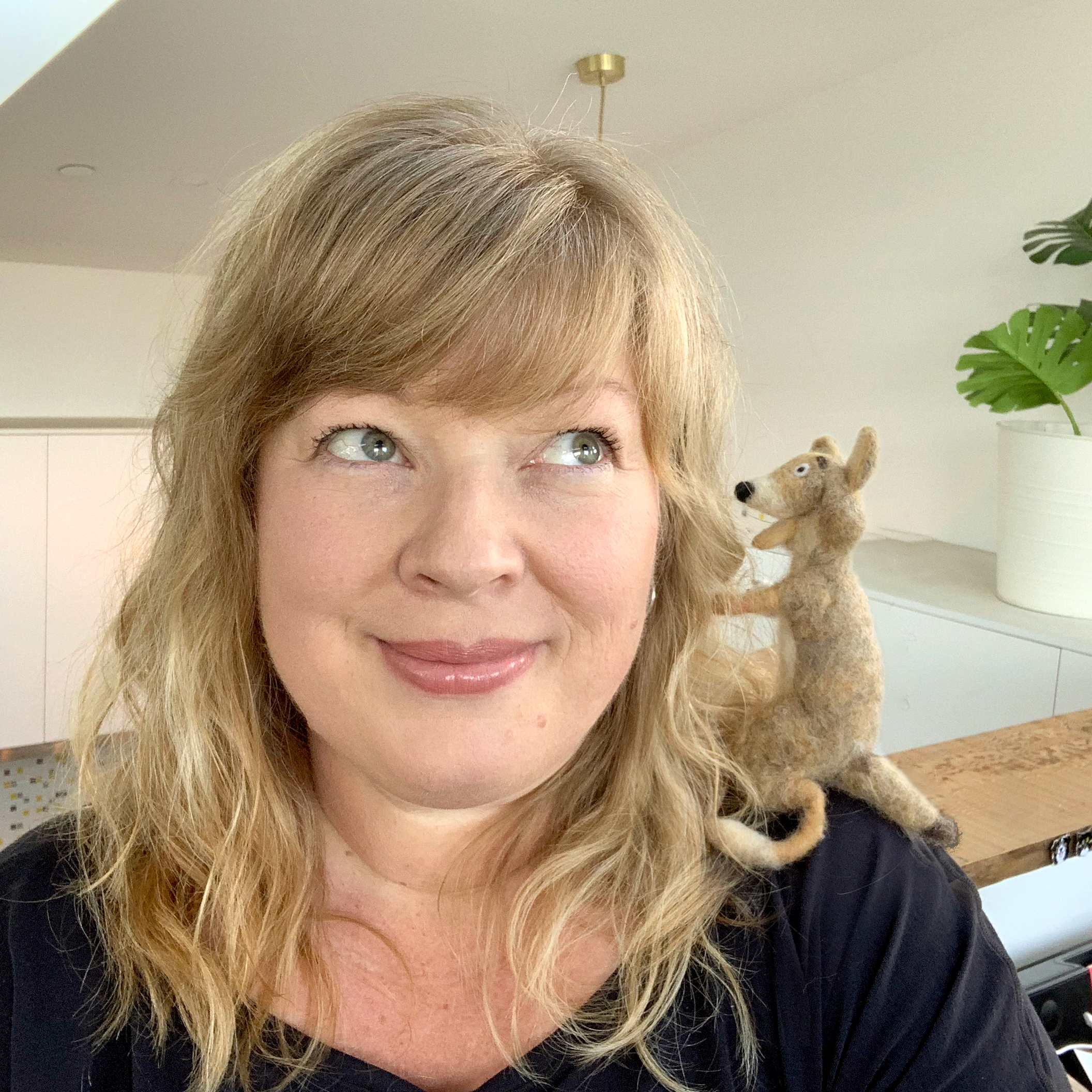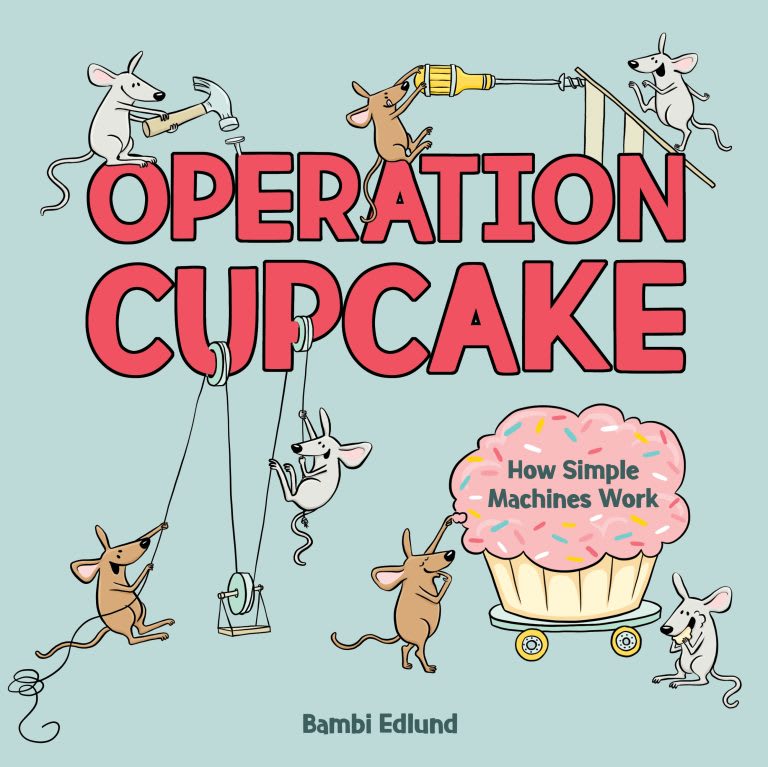
At Teachers on Call, our online and in-home tutoring service is always on the lookout for creative ways to bring STEM learning to life—and this month’s Hooked on Books feature does just that. Operation Cupcake: How Simple Machines Work is a delightful blend of storytelling with STEM education, and a proud nominee for the 2025 Forest of Reading® Silver Birch Express Award, aimed at young readers in Grades 3 and 4. The story follows two clever mice, Ginger and Mac, on a daring mission to snag a sweet treat, a towering vanilla cupcake. As they navigate challenges like a high counter, a heavy glass dome, and the watchful eyes of a cat and dog, the duo uses six simple machines to problem-solve their way to success. We’re thrilled to share our interview with Bambi Edlund, the Vancouver-based author and illustrator behind this early introduction to elementary physics, math and engineering. Keep reading to learn more about her inspiration, creative process, and how this playful picture book introduces big scientific ideas in a way that’s easy to understand and a lot of fun!
STEM education plays a vital role in building problem-solving and critical thinking skills from an early age. Teachers on Call’s in-home and online math and science tutors believe relatable stories are a powerful way to spark curiosity and make complex topics easier to understand. With themes of teamwork, perseverance, and creativity, Operation Cupcake offers a fantastic introduction to foundational science and math concepts for young learners. You’re never too young to get excited about STEM—and that’s why our in-person and online tutoring team often recommends STEM books like this one to support learning that’s hands-on, meaningful, and most importantly, fun!
Discover the Magic of the Forest of Reading
Each year, the Forest of Reading program invites children and teens across Canada to discover outstanding Canadian books—and to have their voices heard. Run by the Ontario Library Association, this national initiative is the largest recreational reading program in the country, featuring ten award categories that celebrate books in both English and French for all age groups. What sets the Forest of Reading program apart is its student-driven approach: young readers are the judges, casting votes for their favourite titles throughout the month of April. The excitement culminates in the Forest of Reading Festival, a joyous celebration held at Toronto’s Harbourfront Centre (235 Queens Quay West, Toronto, ON M5J 2G8), where students, authors, and educators gather to honour the finalists and winners. At Teachers on Call, we love how the program blends a love of literacy with a lesson in civic engagement, giving students the chance to experience the democratic process through the power of stories.

About the Author and Illustrator: Bambi Edlund
Bambi Edlund is a talented self-taught artist, designer, and stop-motion animator based in Vancouver, British Columbia. She brings a unique blend of creativity and curiosity to her work, which includes illustrating several engaging children’s books such as What a Waste: Where Does Garbage Go? and Dogs vs. Humans: A Showdown of the Senses. With Operation Cupcake, Bambi continues to inspire young readers by turning big ideas—like the science of simple machines—into fun, accessible learning adventures. Her passion for storytelling and education makes her books a wonderful addition to both classroom and home libraries.
Behind the Sprinkles: The Story and Science of Operation Cupcake with Bambi Edlund
Your illustrations are both playful and informative. How do you balance storytelling with educational content in your work?
For me, hard facts always feel so much more accessible when there’s a story or a clear example to go along with it. With this book, I wanted to illustrate each simple machine in use, rather than simply explaining how they work. Showing the two mice actually interacting with the machines to complete a task seemed like a great way to showcase their usefulness in a fun and memorable way.
What inspired you to create a story that combines humour with the concept of simple machines?
When I started researching simple machines I was so fascinated by them and found myself telling people little facts about them, and that’s always how I know I’ve hit on the right topic. I love the challenge of taking subject matter that could be dry and boring, and turning into something fun to read. As for adding humour, I’m a firm believer that having some funny, sassy critters involved makes everything more interesting!
What do you hope young readers will take away from Operation Cupcake in terms of understanding simple machines?
That simple machines are EVERYWHERE. The more I read about them, the more I was amazed at just how ubiquitous they are, in every corner of our lives and bodies. I found myself noting things throughout my day that use levers or inclines or wedges. I hope readers start noticing these machines as they’re doing tasks too!
Your book introduces young readers to the six simple machines through an engaging narrative. How do you hope Operation Cupcake contributes to fostering an early interest in STEM (Science, Technology, Engineering, and Mathematics) among children?
My hope is that the funny antics may help draw in readers who wouldn't normally choose a “science book”, and demonstrate that STEM subjects can be interesting and also a lot of fun! I think taking a lighthearted approach can make the learning process feel less intimidating and more accessible than picking up a more serious book that may seem daunting.

How can educators and parents use the book to spark curiosity and discussions about physics and engineering concepts?
The book includes several simple at-home experiments using objects that most people have easy access to, and trying out some of these can really illuminate just how useful the machines are. When I was figuring out the experiments, I couldn’t believe the difference that wrapping a rope around a couple of broomsticks made in terms of lifting a heavy jug of water. These tools are deceptively simple, so much so that it can feel downright magical when you put them to use! I hope that the book inspires some playing around with the machines, since a playful approach demystifies the concepts, and also inspires curiosity.
Do you have a specific routine or environment that helps you stay inspired while working on your projects?
I work from home with my bossy cat Midge (who appears in the book!) and my young dog Dudley. They can be distracting, but they’re also hilariously entertaining, and their silly antics definitely inspire me when I’m drawing animals. I tend to switch back and forth between writing and drawing most days, but when I hit a roadblock, I head out for a long walk. Over the years I’ve learned that it’s the most reliable way to figure out a problem. By the time I get back I’m refreshed and almost always have a solution to whatever drawing or writing issue I was having.
~
Operation Cupcake: How Simple Machines Work is a shining example of how educational content and imaginative storytelling can come together to spark curiosity and inspire young minds. Through Bambi Edlund’s playful illustrations and clever narrative, readers are introduced to core STEM concepts in a way that’s both engaging and accessible. As students across Canada dive into this year’s Forest of Reading selections, we’re reminded of the power of books to not only entertain, but also to teach and empower. Whether you’re an educator, parent, or tutor, this sweet STEM storytime adventure is sure to be a classroom and bedtime favourite—and a perfect reminder that learning is all around us, sometimes in the most unexpected places (like under a glass cake dome). Looking for more Forest of Reading interviews with titles that encourage creativity and problem-solving? Check out our recent Hooked on Books interview with Sakshi Mangal, Vancouver-based author of Asha and the Toymaker. Read it here: The Power of Visual Arts in Learning. For the full list of 2025 Forest of Reading winners, check out our blog.
Related Articles View All
An Interview With Johnnie Christmas on the Power of Graphic Novels for Readers of All Abilities
Discover how graphic novels can inspire and elevate readers of all abilities in our exclusive interview with bestselling author and illustrator Johnnie Christmas. From boosting visual literacy to engaging both reluctant and advanced readers, Johnnie shares insights into the creative process behind Gamerville.
“Touching Grass:” How One Story Inspires Kids to Unplug and Connect with the Real World
In Touching Grass by Kristy Jackson, a young gamer learns to unplug and reconnect with nature at a Dene First Nation culture camp—a heartfelt story about balance, belonging, and stepping outside.
Forest of Reading 2026 Nominees Announced: Celebrating the Best in Canadian Children’s Books in English and French
The Forest of Reading 2026 nominees are here! This year’s lineup celebrates diverse Canadian authors and illustrators from coast to coast, with books in English and French for readers of all ages. Explore the full list and discover which stories students across Canada will be reading—and voting for—this spring.

